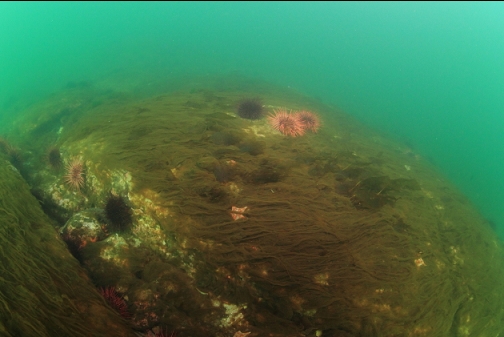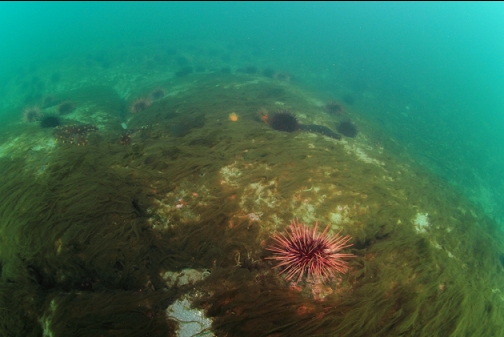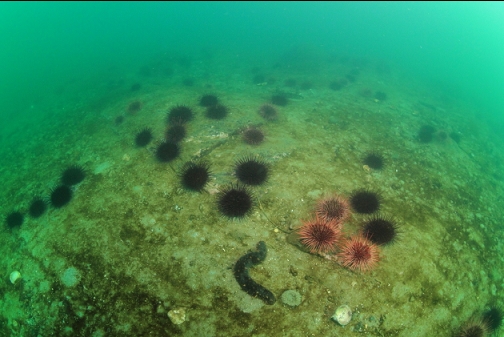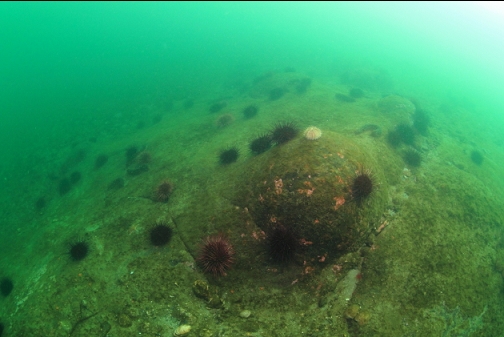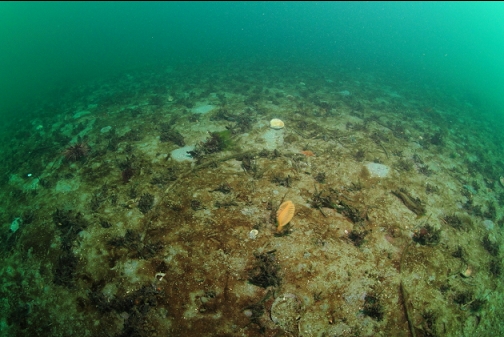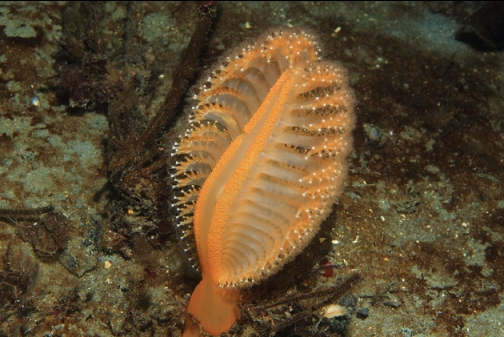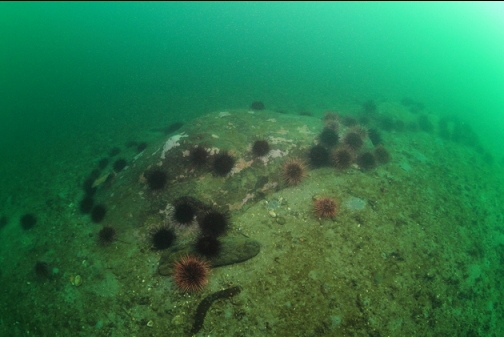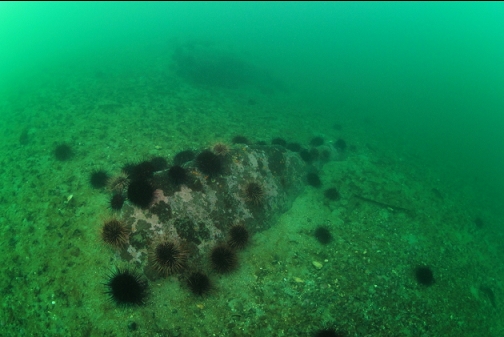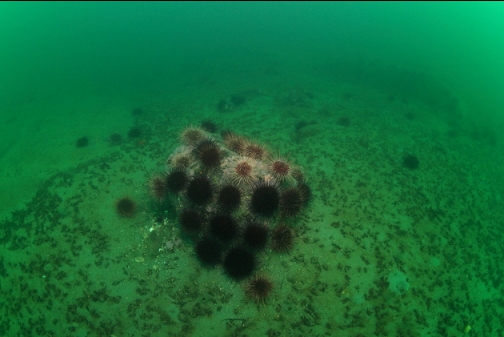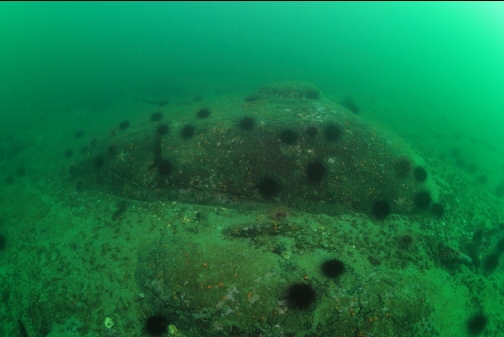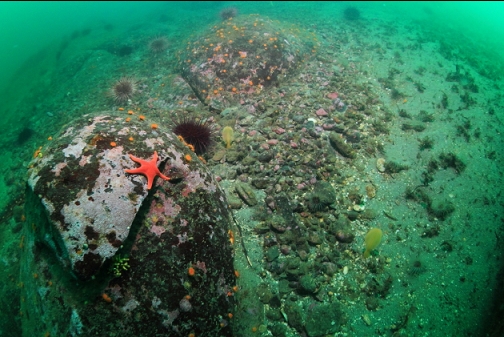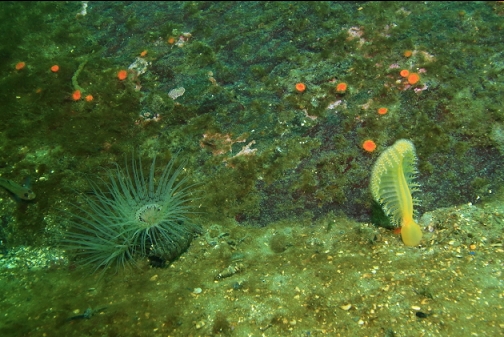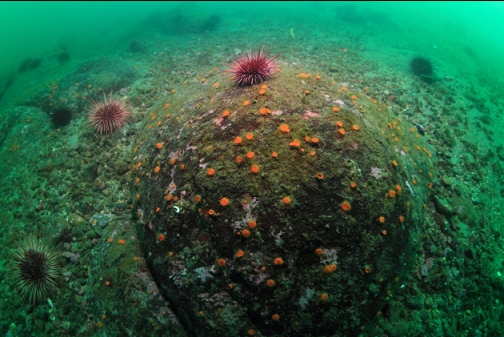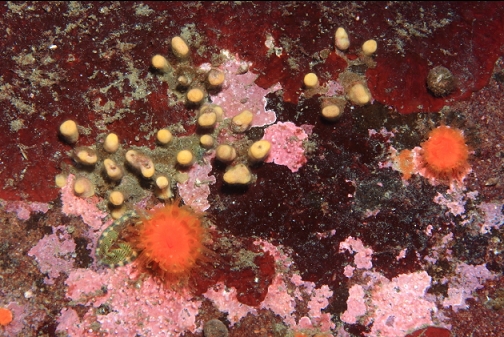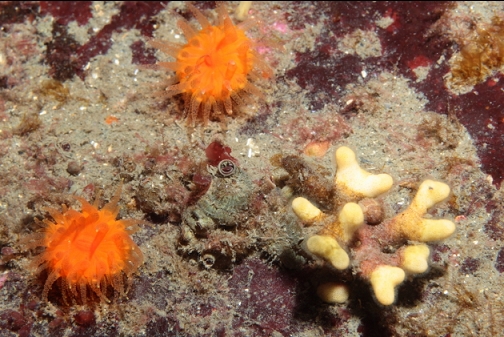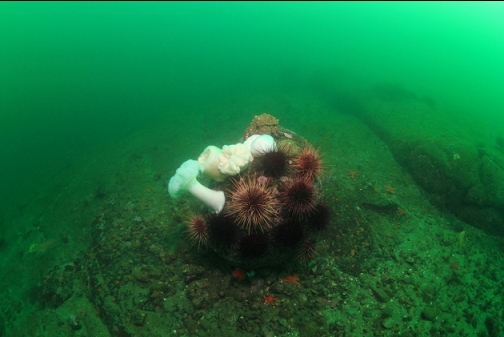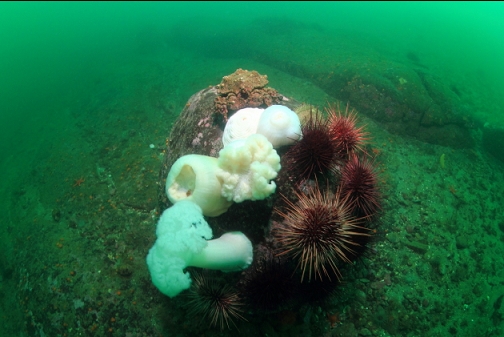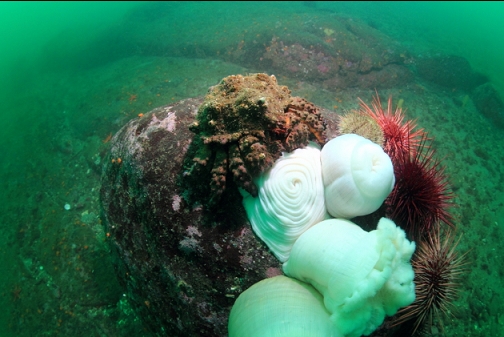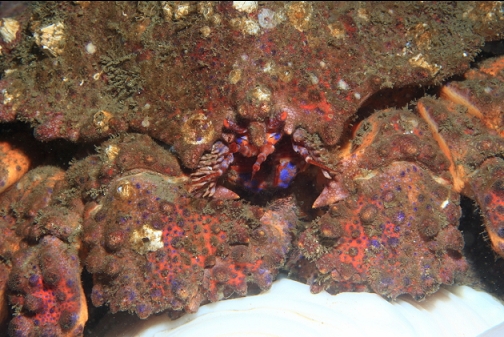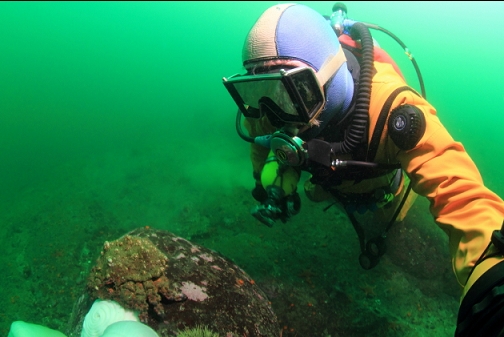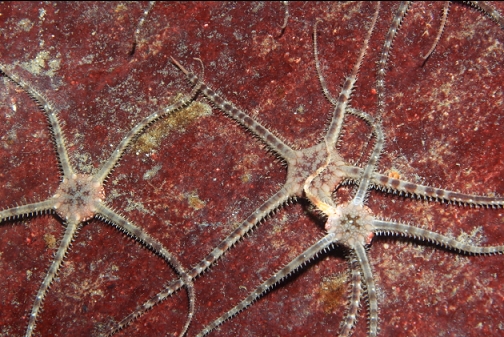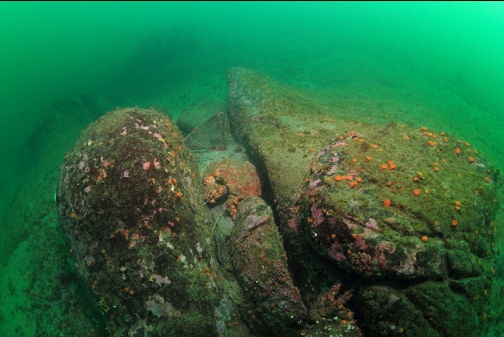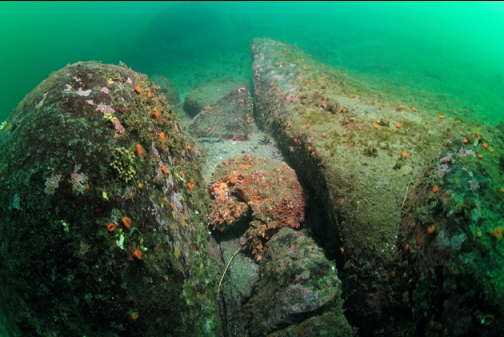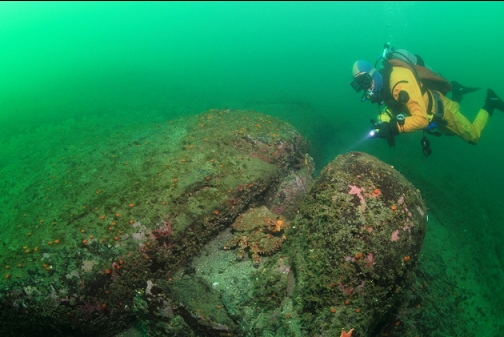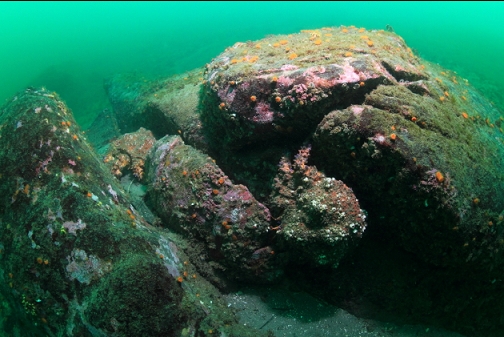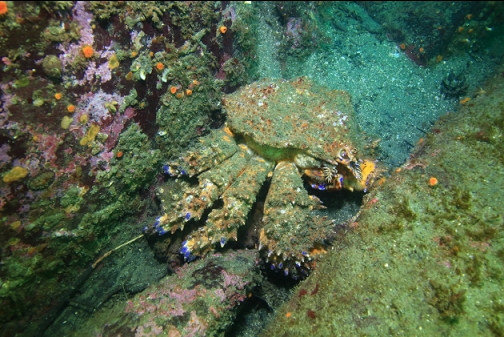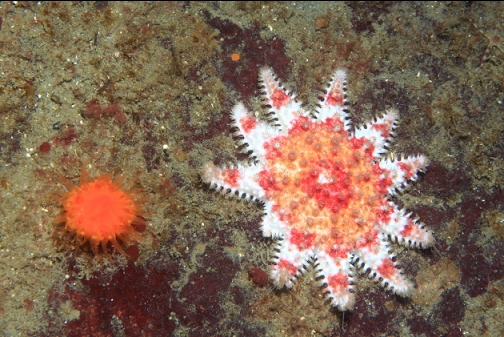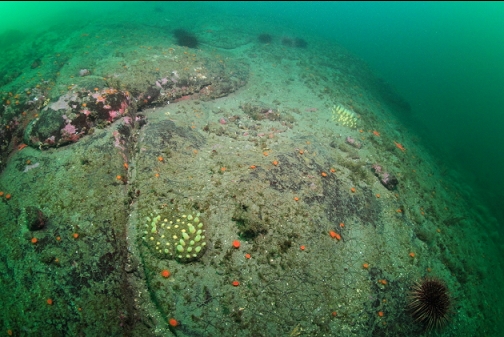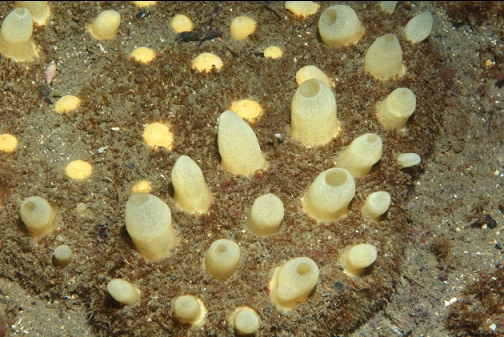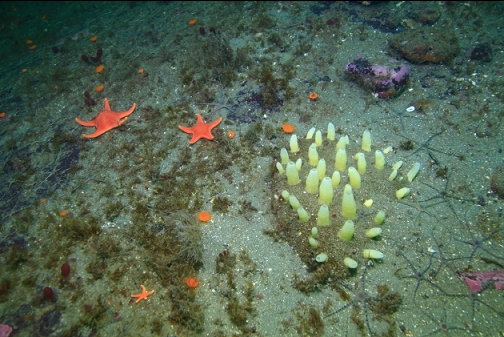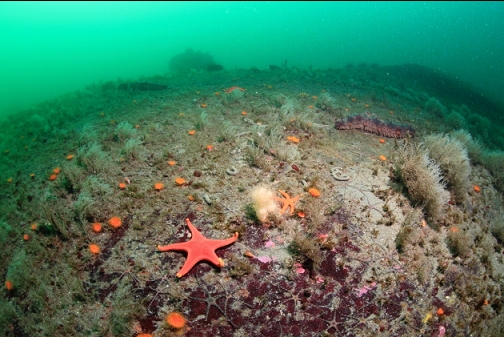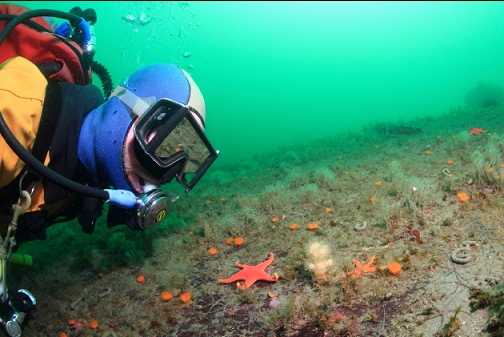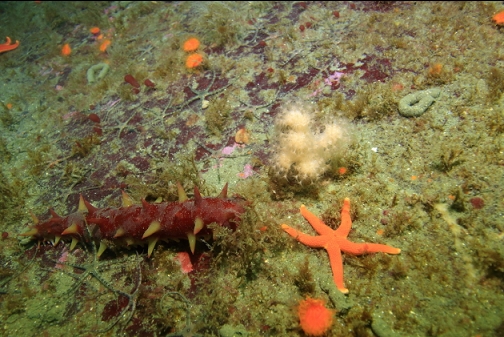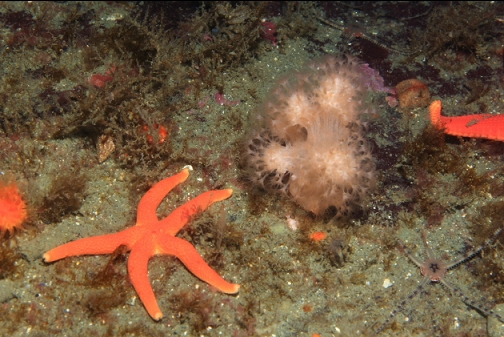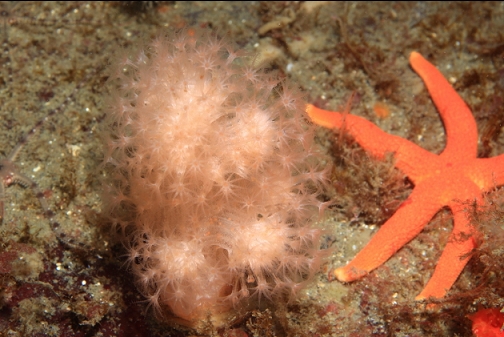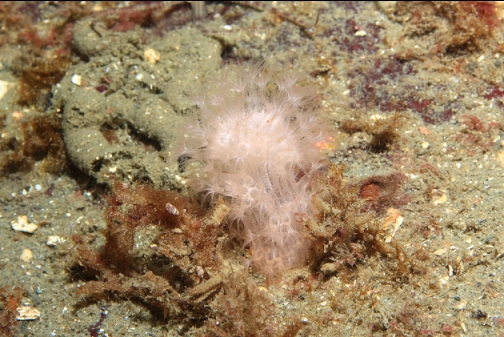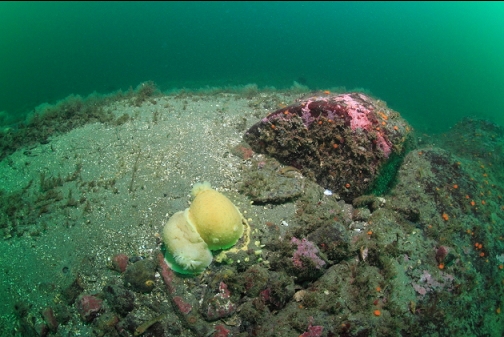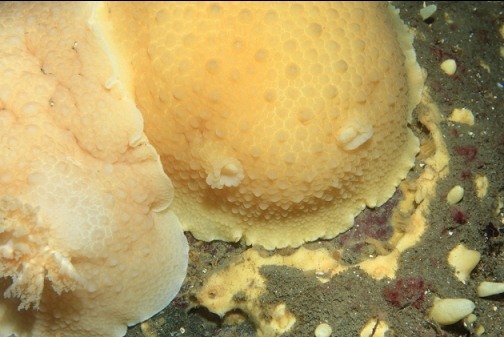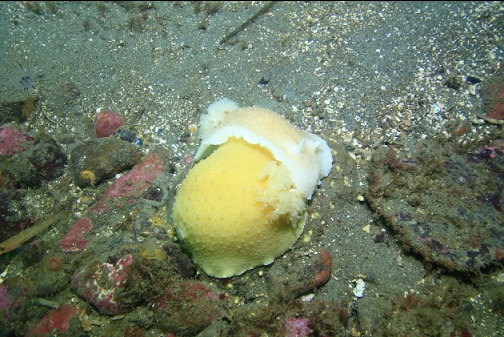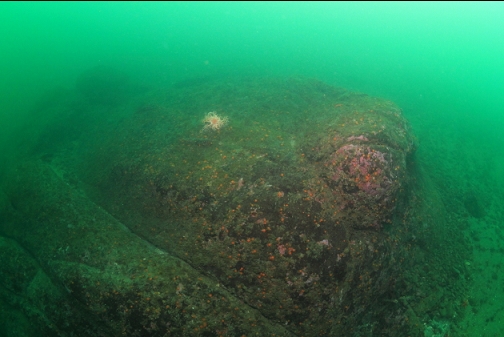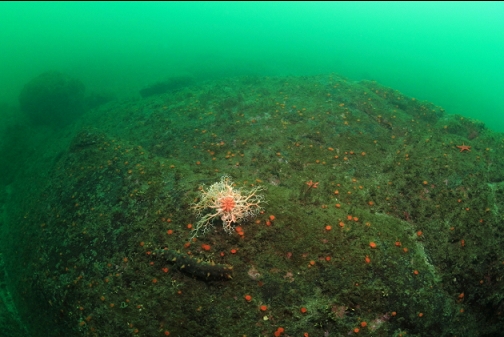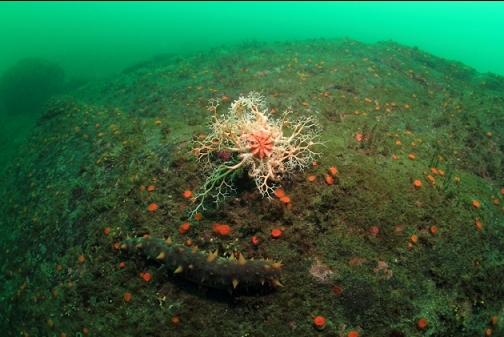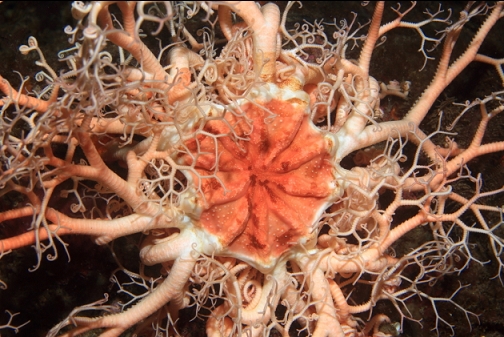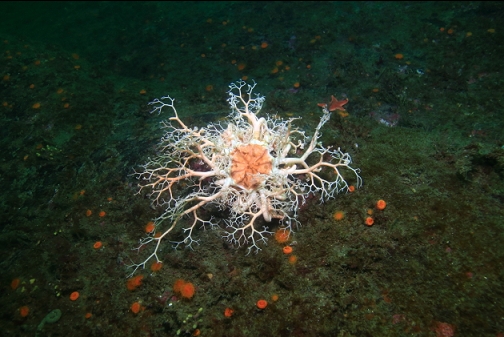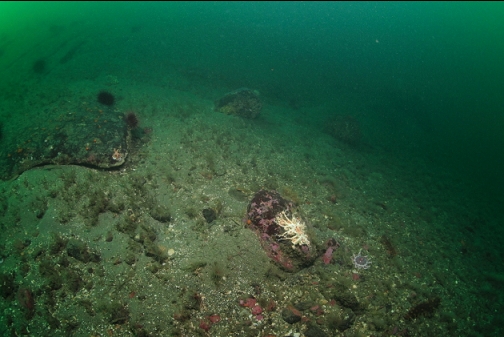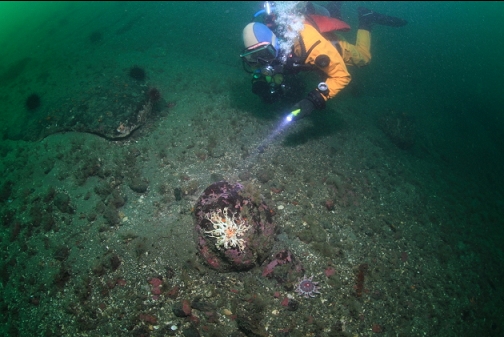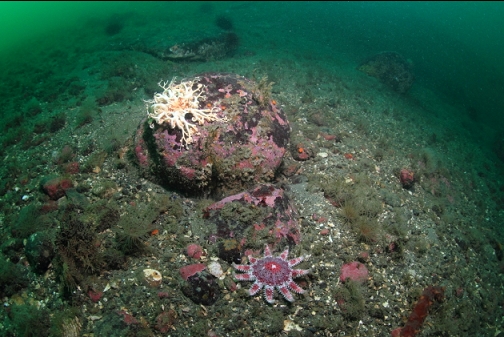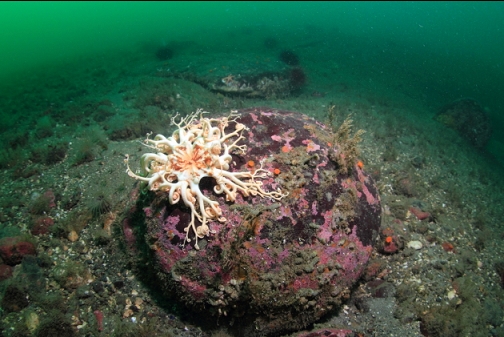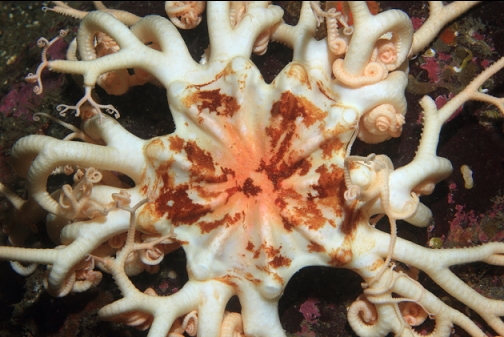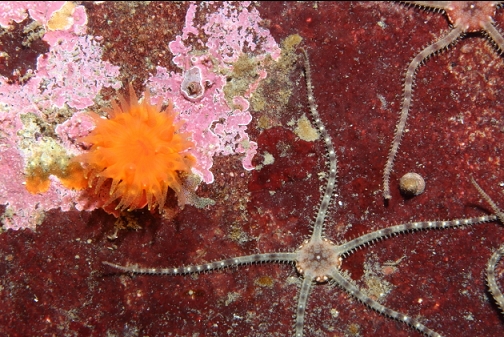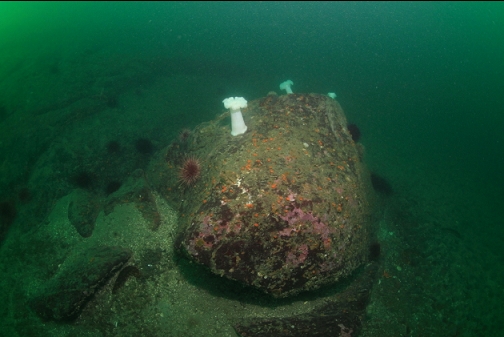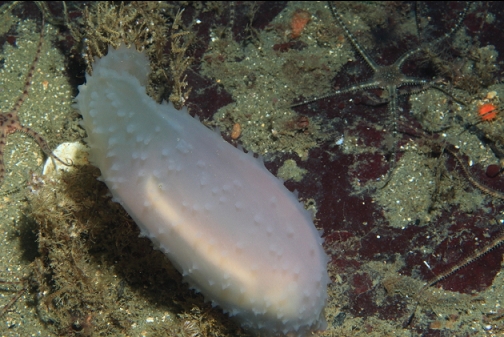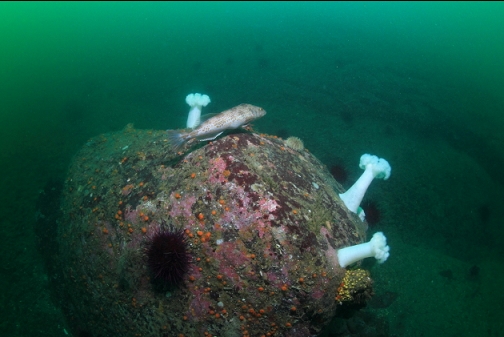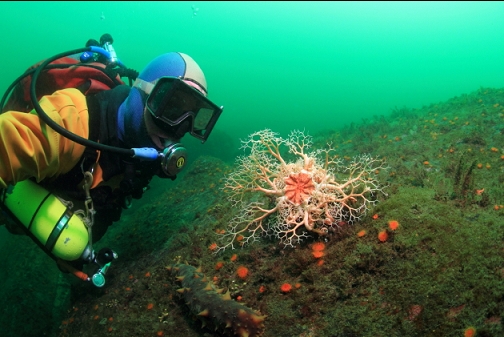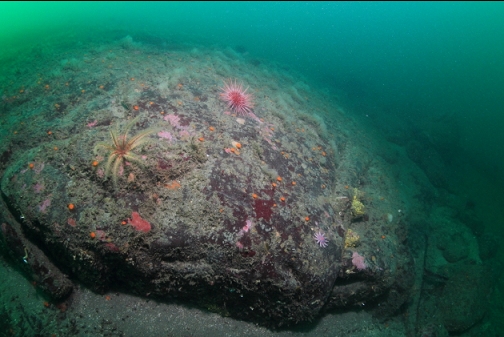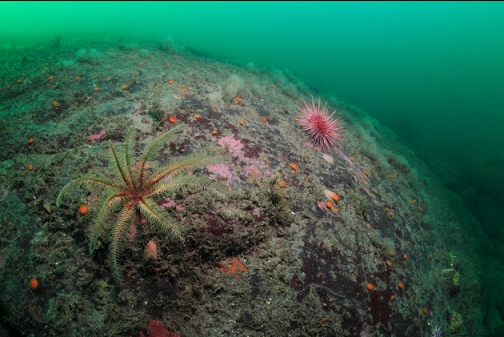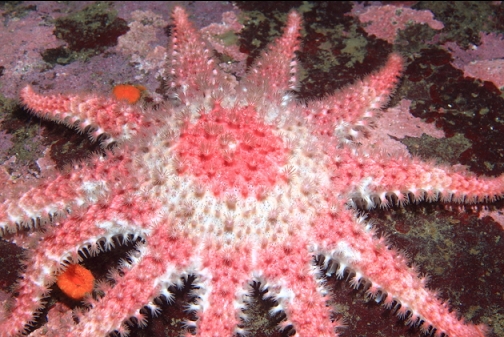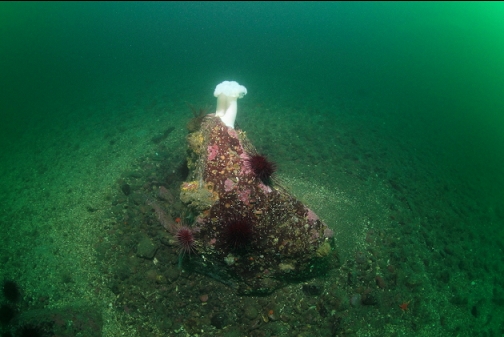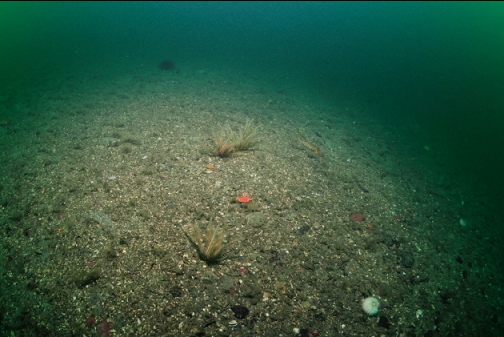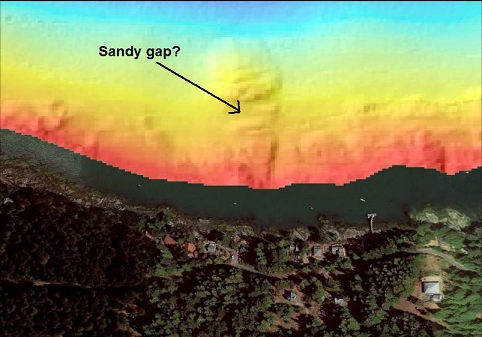This is another of the public right-of-ways along Tumbo Passage on Saturna Island. There is a street sign naming this one "Salal Road" although it's really just a short, gravel and grass gap between the neighboring houses (# 663 and 665). According to the sidescan image, this access has what looks like the largest rocky area along this coastline sticking out into Tumbo Pass. I came here on March 18, 2023. The Spring plankton bloom was forecasted to occur starting in as little as 2 days later so I wanted to dive here before that destroyed the visibility for a few months. It was also a very low current exchange day with a very small flood in the middle of the day on a sunny weekend. Conditions really don't get better than this so I had to take advantage of it.
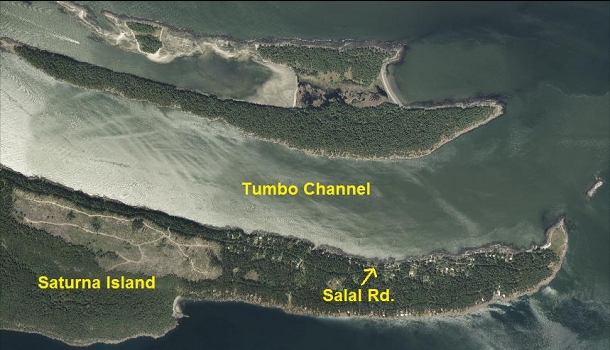
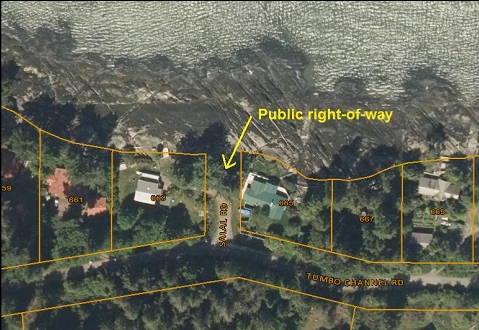
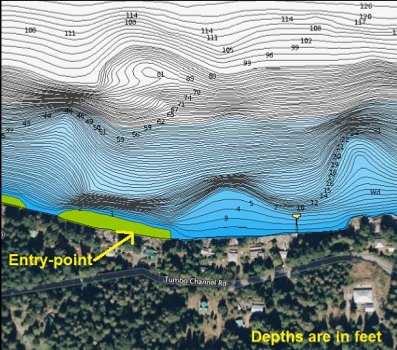
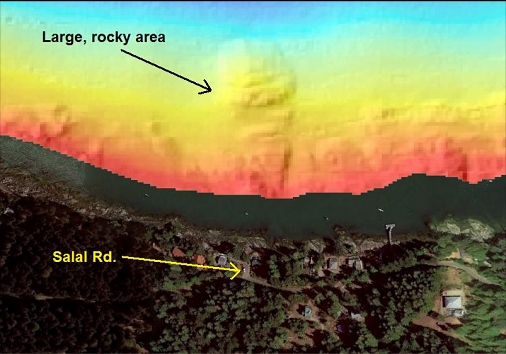
I think this public access would be considered a "view point" instead of a "beach access" since there was a bench sitting above a steep drop to the driftwood and sandstone beach. I could just barely climb down this short drop, and when I was wearing dive gear I had to crawl up on my hands and knees. On a rainy day, when it would be muddy, it probably wouldn't be possible to climb down without slipping. I wasn't quite sure how to time slack exactly here. The Boat Pass current table showed slack at around 9:10 and the Tumbo Pass tide table showed very little exchange between 10:30 and 2:30. I arrived at around 10:00 and could see the current still obviously swirling around. I watched for a bit and it seemed to be slowing down so I went in at around 11:00. The surface photos below were taken after the dive when the water was calm and there was no visible current.
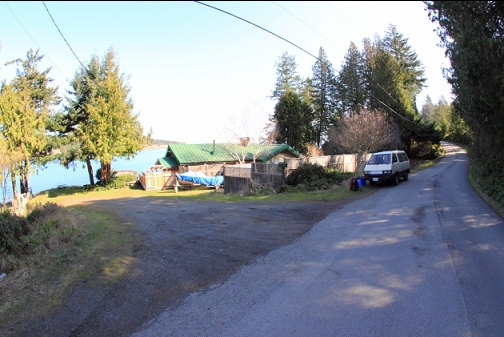
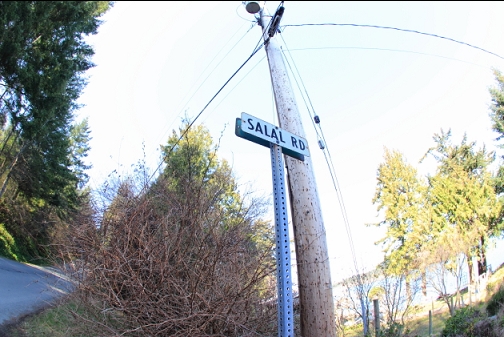
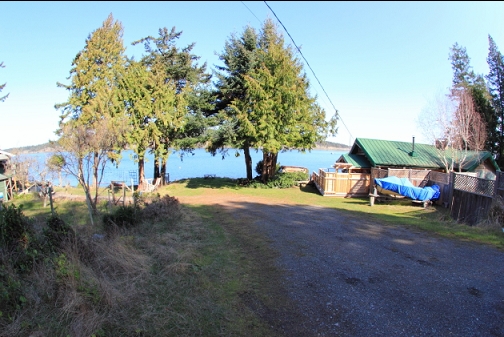
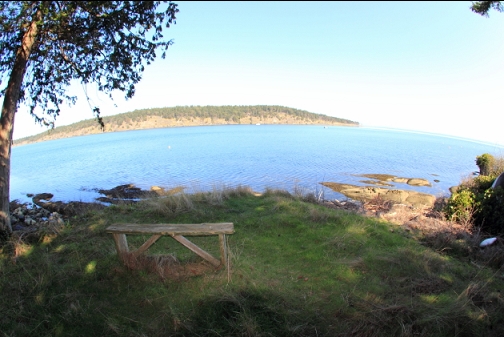
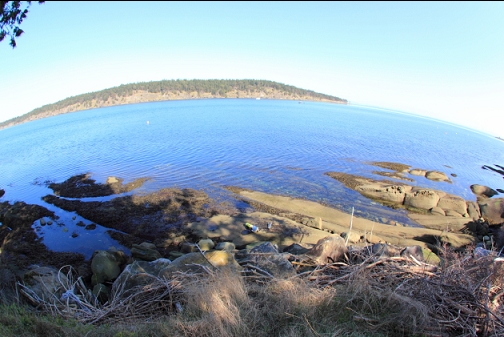
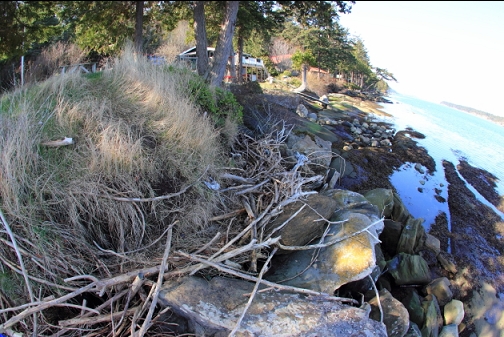
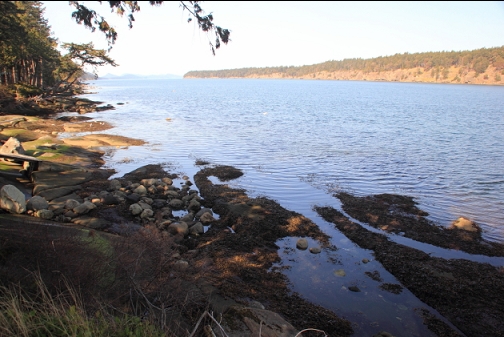
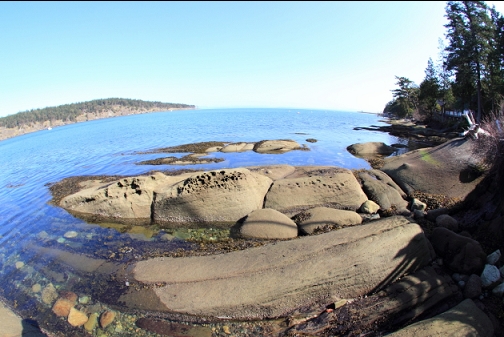
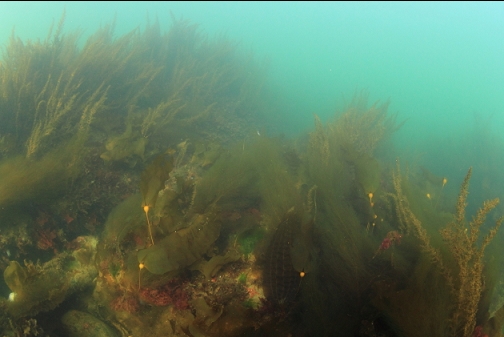
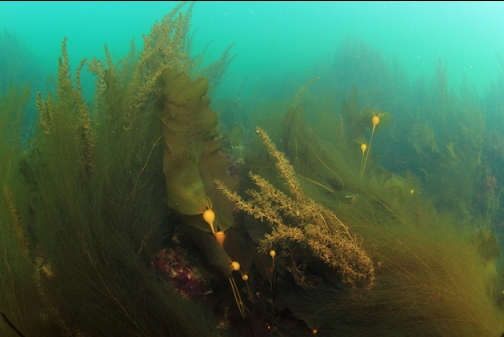
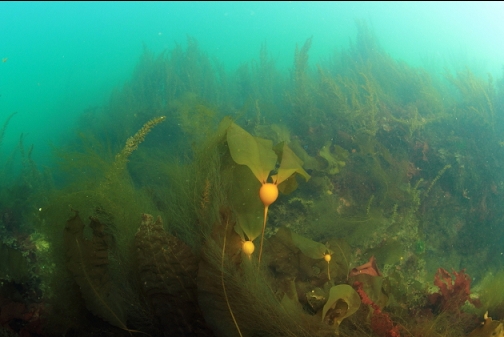
In the shallows, there was an unusual mix of the invasive Japanese Wireweed (Sargassum) and young bull kelp. Bull kelp needs colder water (less than 15 degrees to thrive) and Japanese Wireweed prefers warmer (17-20 degrees) water. I've only seen these species in the same place at a few other places. Japanese Wireweed is common in places where the water warms up in the Summer like the Strait of Georgia and Saanich Inlet (where it's too warm for bull kelp to survive). Bull kelp is common in the colder water of the Strait of Juan de Fuca (where Japanese Wireweed is almost non-existent). I'm guessing that the current around Boundary Pass and Tumbo Channel stir up cooler water from deeper down, which limits how high the temperature can get here. This might allow this bull kelp to survive the Summer. Visibility here in the shallows was 10-15', so the Spring plankton bloom must not have started yet otherwise it would have been much worse.
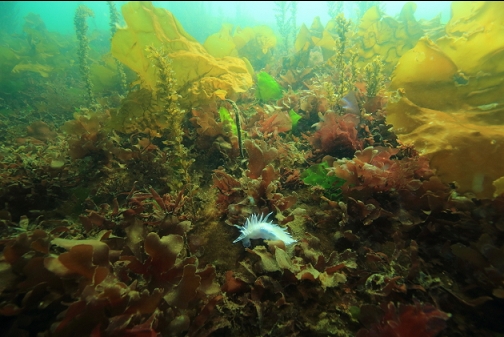
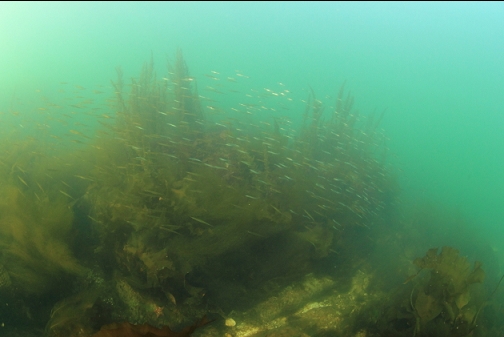
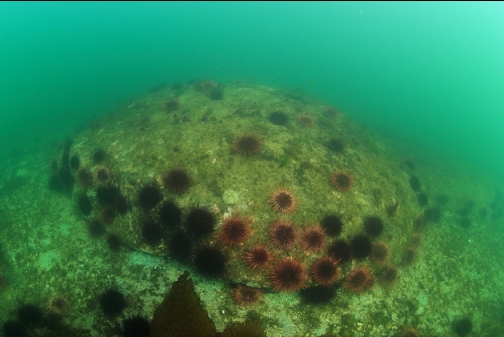
At about 20' deep, the seaweed thinned out and the rocks were covered with fuzzy, slimy green-brown diatom growths. This was being grazed on by red and green urchins and California cucumbers. Below 30' deep, the visibility improved to around 20'. I felt a slight current, but nothing worrying. The rocky reef didn't seem to be as solid as the sidescan image promised. The rocky areas were more scattered with sandy gaps and boulders in between. Cup corals were dotted all over the rocks below about 30' deep.
Below 50' deep, the amount and variety of marine life started to increase. I saw some Puget Sound king crabs congregating to mate. I hardly saw any fish on this dive, just 2 kelp greenlings, one copper rockfish and 2 small lingcod. Back in 2005, Tumbo Channel was being considered for a Rockfish Conservation Area, but it was cancelled due to public outcry.
I saw some basket stars in the distance and then I almost forgot about them when I saw a couple of tiny soft corals. The only other place I've seen this species is along the West side of Galiano Island. Here, they were at exactly the same depth as on Galiano (60'). I looked around for some more during the dive, but these 2 were the only ones I saw.
The rocky area seemed to end about 70-75' deep. The sidescan image shows the rocky area going down to over 100' deep about 270 meters from shore. The sidescan image also shows what seems to be a sandy gap between the rocky areas. I swam out across the sand hoping to reach this farther rocky reef. I reached a depth of just over 80' and I didn't see any more rocky areas. I think if I swam out a bit farther I might have reached it, but I was already a long way from shore so I headed back to the rocky area I had already visited.
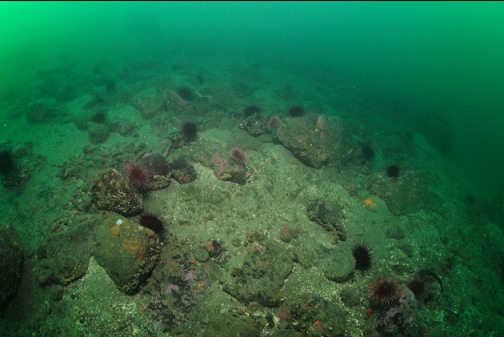
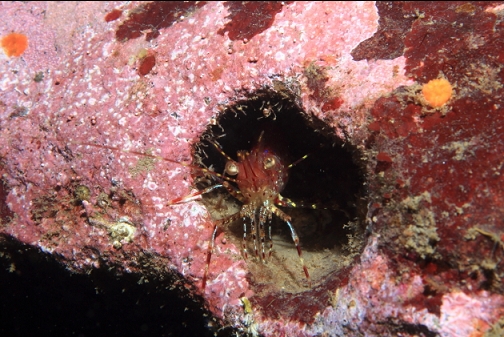
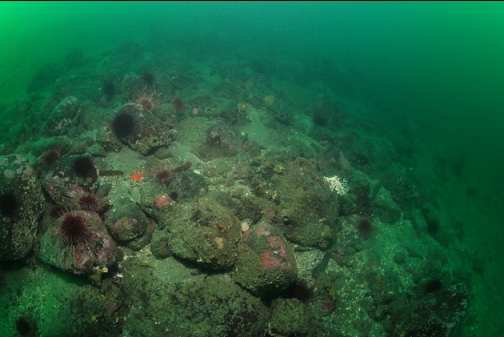
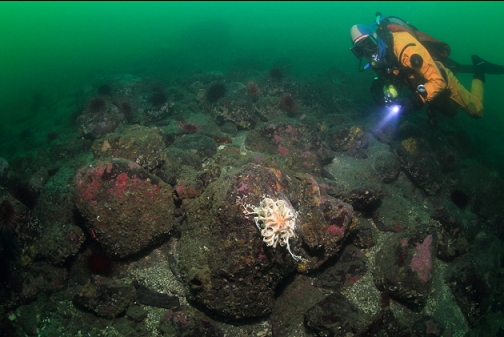
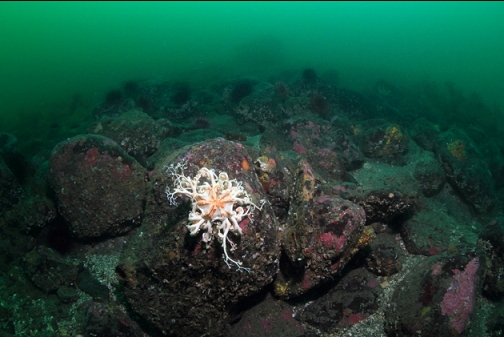
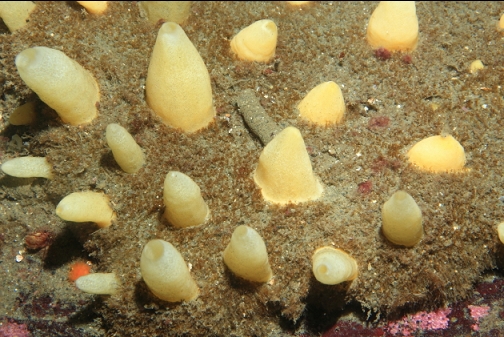
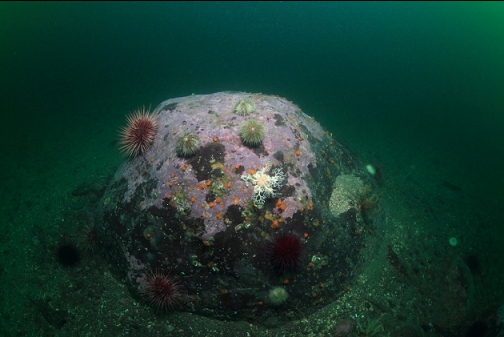
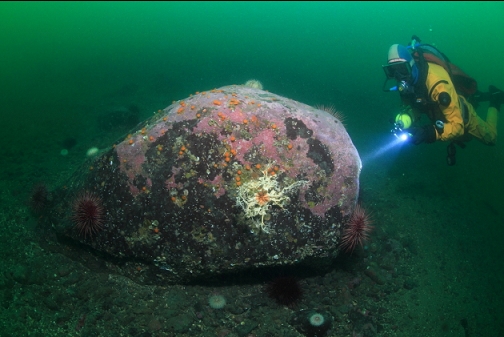
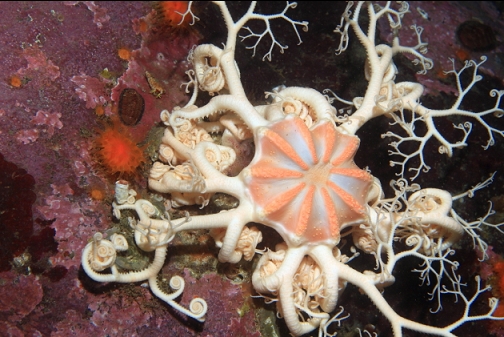
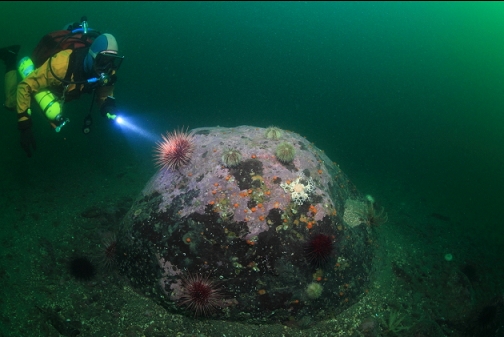
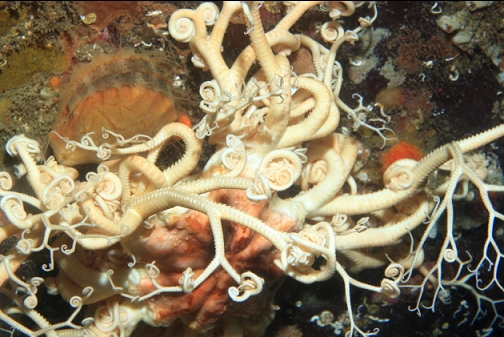
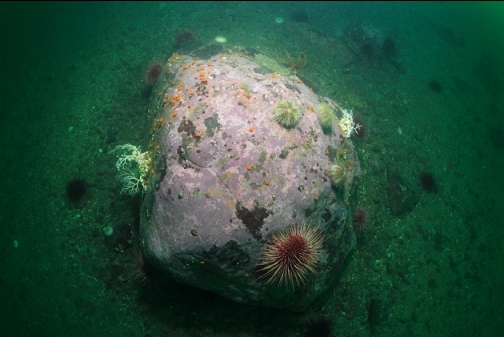
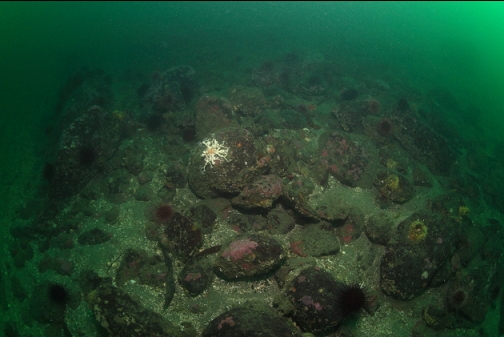
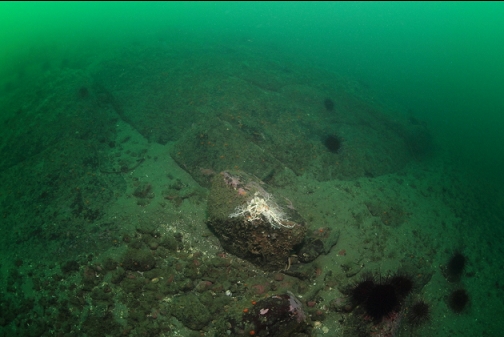
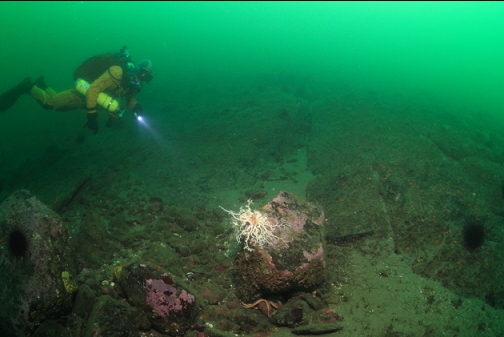
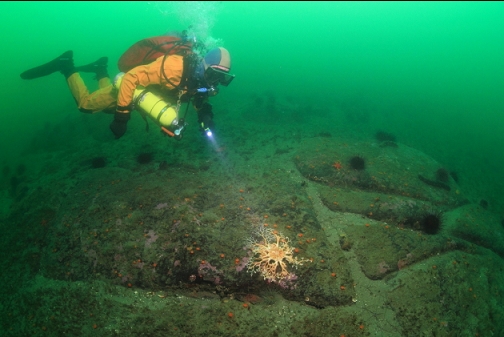
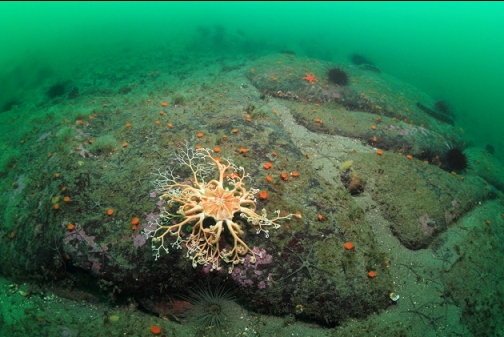
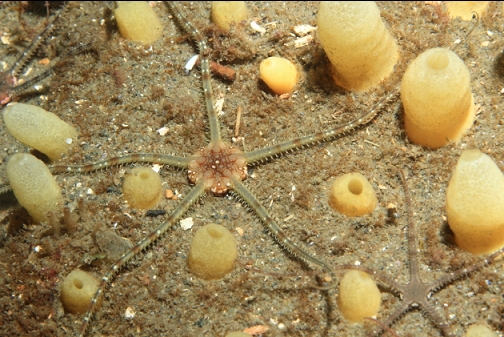
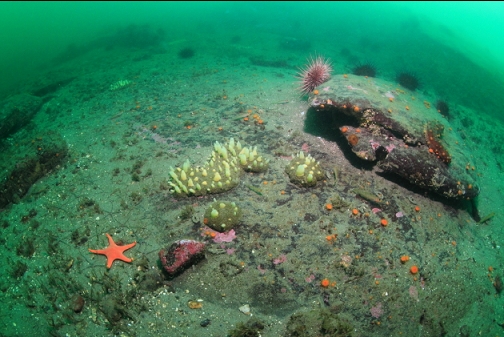
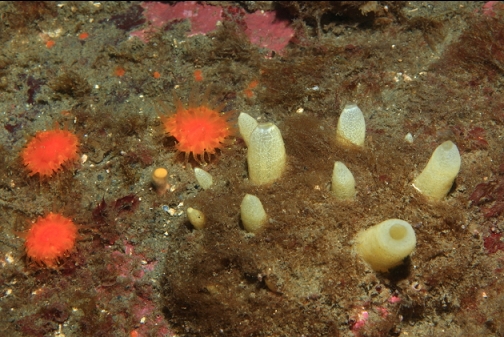
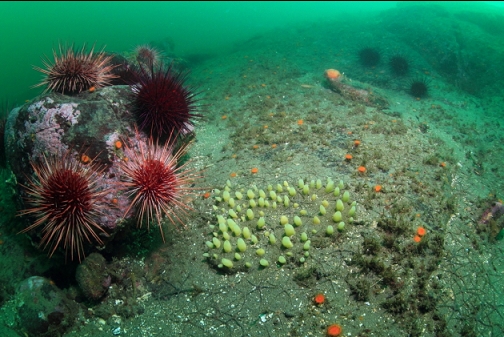
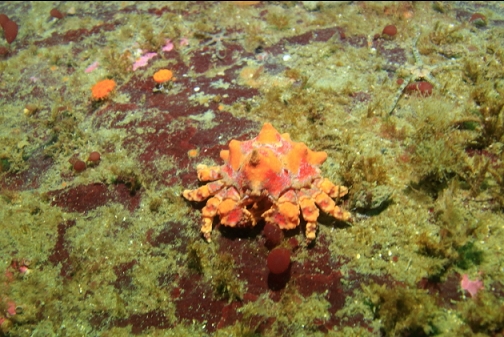
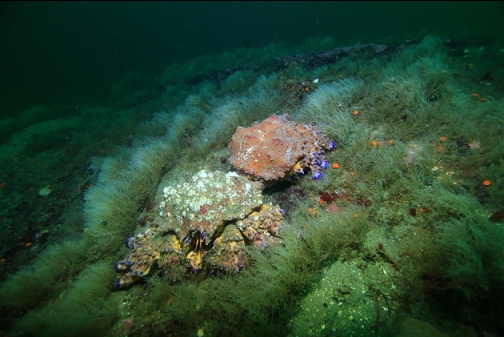
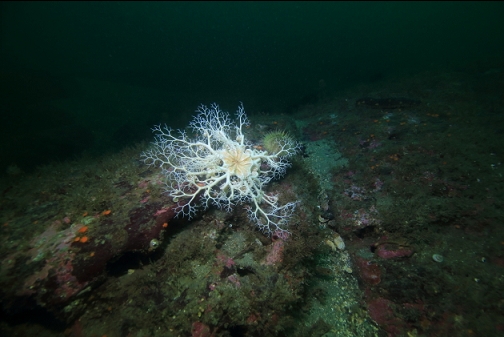
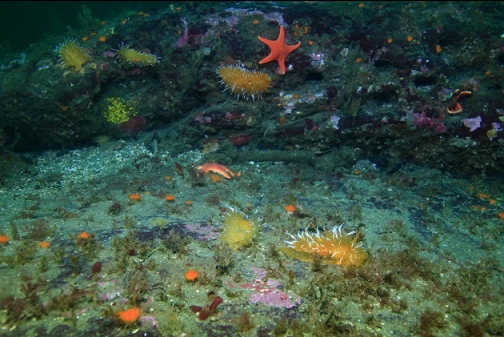
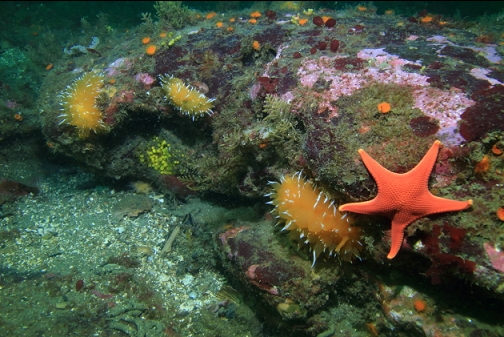
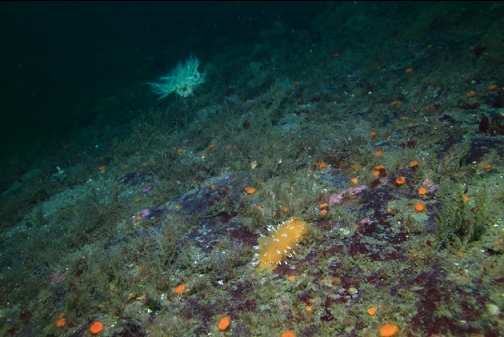
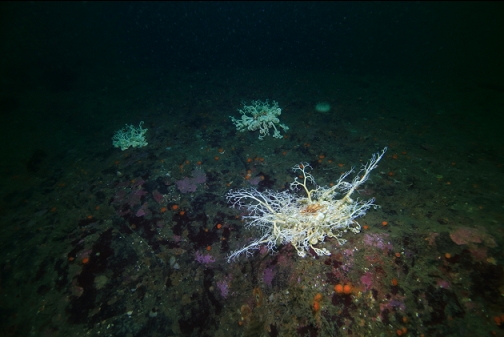
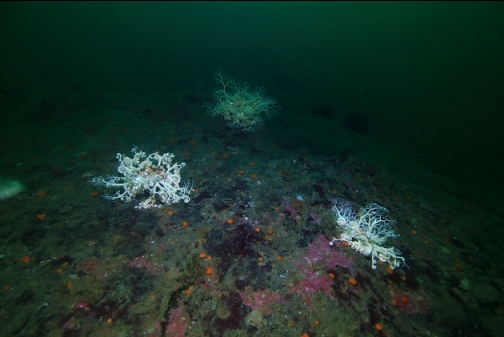
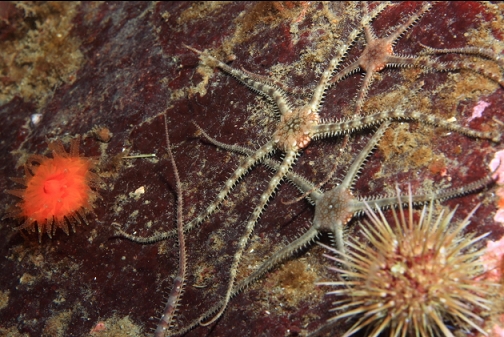
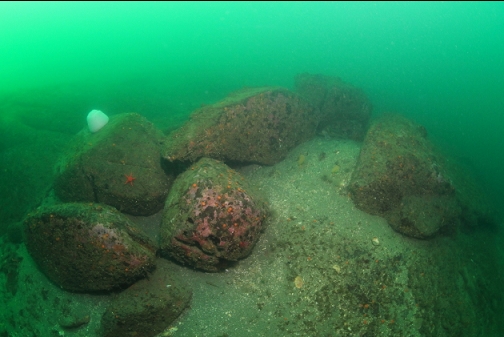
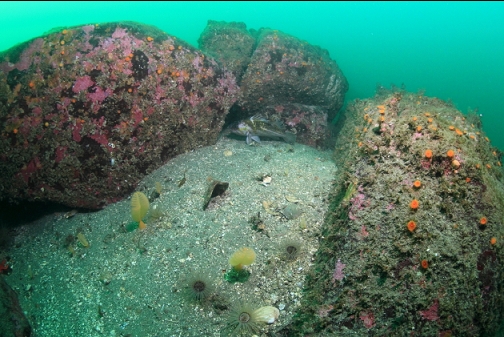
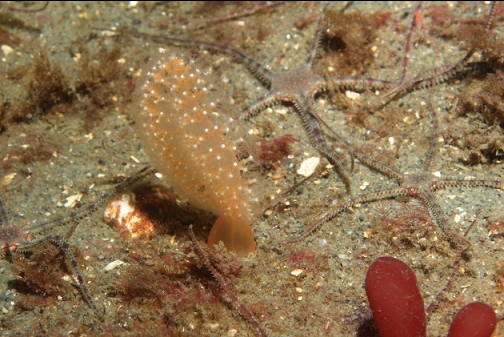
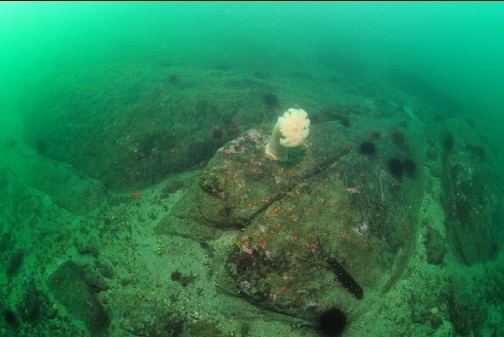
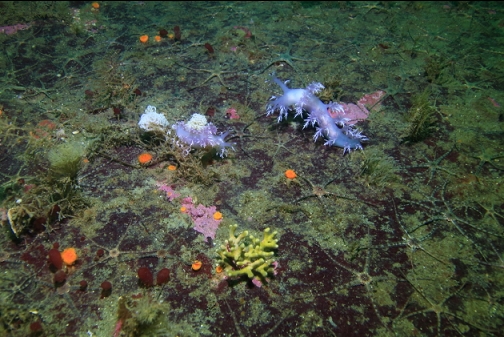
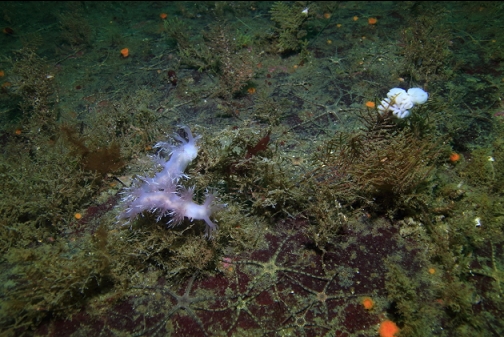
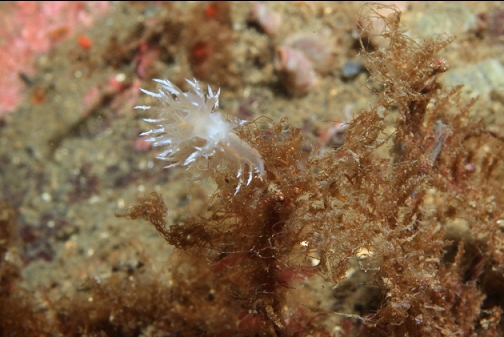
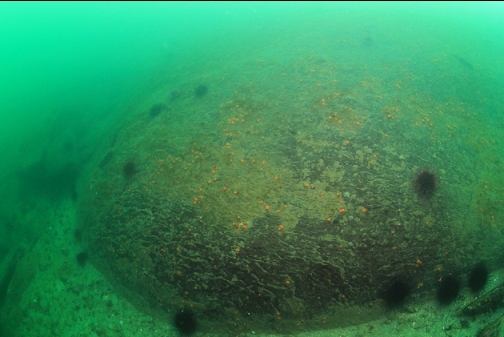
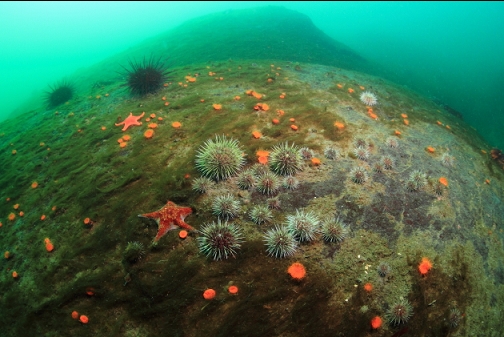
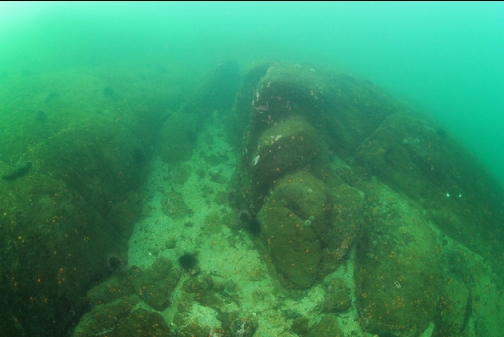
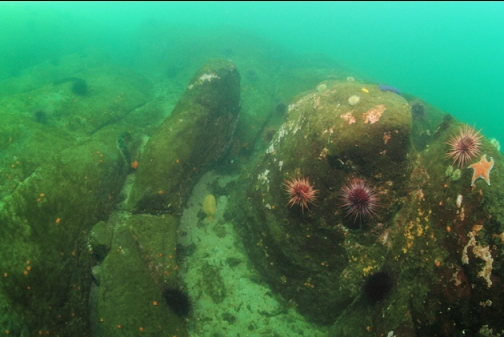
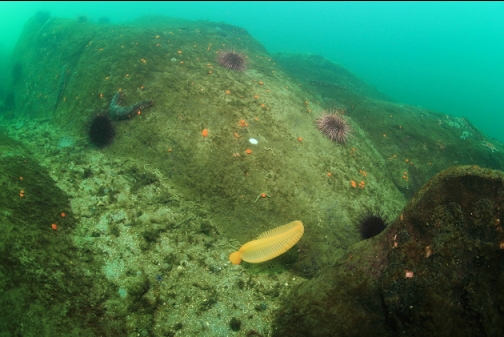
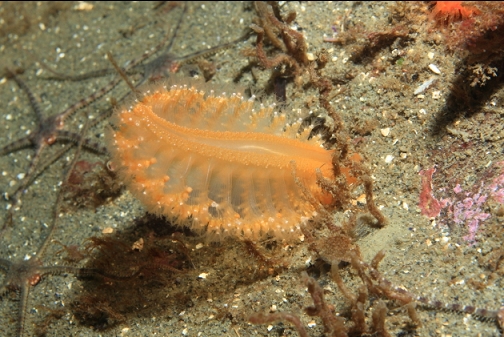
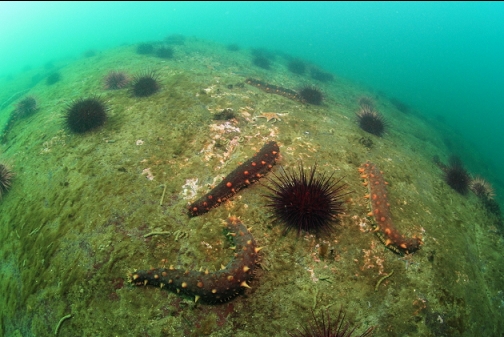
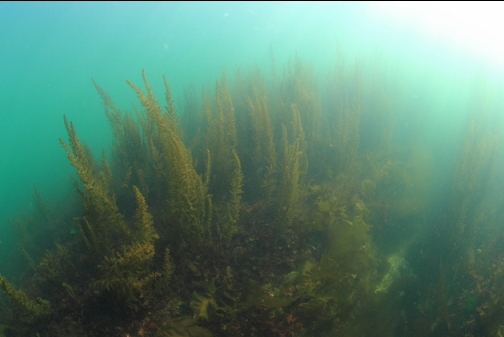
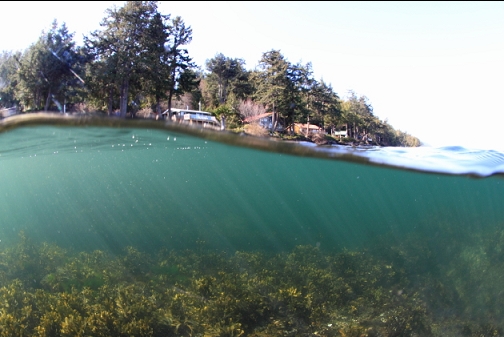
This was another interesting Tumbo Passage dive. I think I like this spot a bit better than the other public accesses I've tried along Tumbo Channel road. Other than the surprise soft coral, there are a bit more basket stars here. I've mentioned before that Tumbo Channel is the only place I know of where you can shore dive to see basket stars. I've seen 2 of them before, diving from shore off South Pender Island, but at one of those sites (Drummond Bay) I only saw one once and then never saw it again. At the other site on Pender (Brooks Point), I saw one, but access involves a long surface-swim and then a long underwater swim in an area with strong current so I wouldn't dive there from shore again. Now I'm waiting for the Spring plankton bloom to come and go so I can do some more exploring of this Tumbo Channel coastline.




















